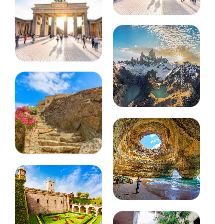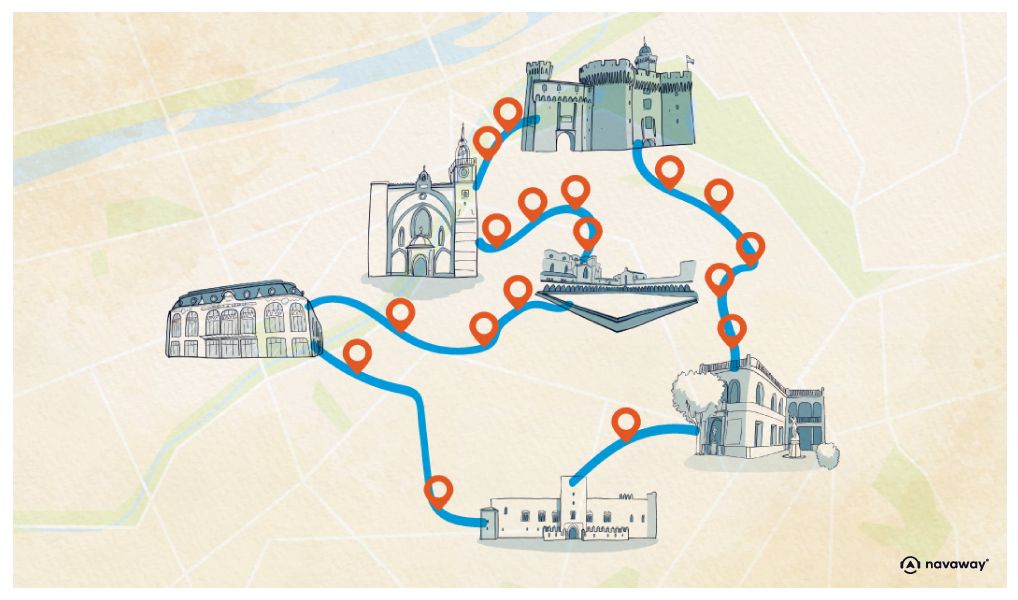
Orgues d’Ille-sur-Têt: full visitor guide
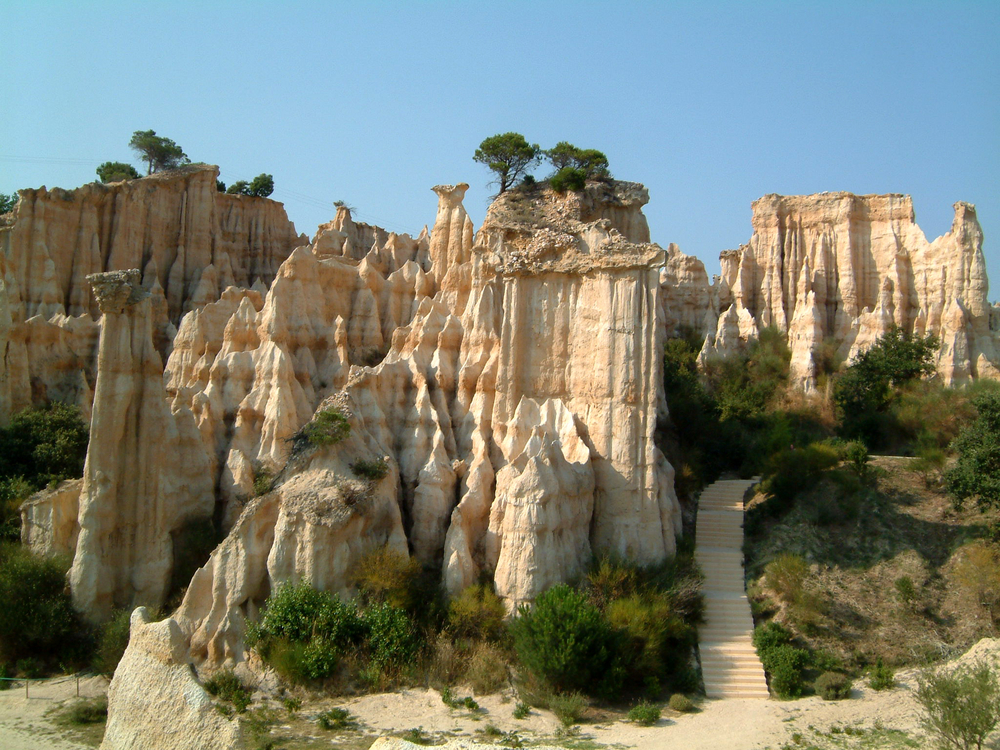
Located around thirty kilometres from Perpignan, the Orgues d’Ille-sur-Têt site is a geological gem that is unique in France. These spectacular rock formations, shaped by erosion over millions of years, offer a landscape worthy of American canyons or Turkish Cappadocia. Listed as a protected natural site since 1981, this exceptional place fascinates visitors with its natural sculptures in ochre hues and its famous “fairy chimneys”. This must-see site in the Pyrénées-Orientales is well worth a visit during your stay in French Catalonia.
Why visit the Orgues d’Ille-sur-Têt?
The Orgues d’Ille-sur-Têt are a remarkable geological phenomenon in the heart of the Pyrénées-Orientales. This unique mineral landscape attracts thousands of visitors every year, who come to admire these columns of sand and clay sculpted by the natural elements. The site offers an immersive experience in an almost lunar setting, where the changing colours of the cliffs evolve with the day and the seasons.
The fragile, ephemeral beauty of these rock formations bears witness to the power of water and wind erosion. Every rain and gust of wind imperceptibly alters the landscape, sculpting new shapes and creating an ever-changing natural spectacle. This very fragility justifies the protection afforded to the site, making every visit unique.
Beyond its purely aesthetic appeal, the Orgues site is of major scientific interest. It provides an insight into the geological processes that have shaped the Mediterranean landscape, and offers an open-air reading of the region’s history. The educational panels set up along the trail provide fascinating explanations of the formation of these fairy chimneys.
Download the audio tour to discover Perpignan on foot and on your own
To complete your visit to the Orgues d’Ille-sur-Têt, extend your discovery of the region by exploring Perpignan on the Navaway audio tour. This French Catalan capital is packed with heritage treasures to discover at your own pace. The application guides you through 19 major places of interest in the historic centre, from the quays of the Bassa to the majestic Saint-Jean-Baptiste cathedral, via the emblematic Castillet and the magnificent town houses of the old quarter.

Also in the Perpignan guide :
- Visit Perpignan in 1 day: 19 things to do and see on foot
- The most beautiful villages to visit around Perpignan
- The 8 best straw huts around Perpignan
- Top 10 culinary specialities in Perpignan
- What to do in and around Perpignan
- The 16 most beautiful lakes in the Pyrenees
- The 18 must-sees to discover Occitania
- The most beautiful villages in the Pyrénées-Orientales
What to see and do at Orgues d’Ille-sur-Têt?
The Orgues d’Ille-sur-Têt site offers a complete visitor experience combining natural discovery, geological learning and immersion in a breathtaking landscape. Here are the main attractions awaiting you on your visit.
1. Rock formations known as fairy chimneys
The main attraction of the site is the extraordinary natural columns, some of which are over ten metres high. Nicknamed “fairy chimneys”, these formations are the result of slow erosion of sediment deposited several million years ago. Their appearance sometimes evokes gigantic organ pipes, sometimes mysterious silhouettes sculpted by an invisible artist.
Shades ranging from white to red ochre, pink and yellow, create a fascinating chromatic palette that changes with the time of day and the light. These colours come from the mineral composition of the sedimentary rocks, combining clay, sand and pebbles. The visual effect is reminiscent of the desert landscapes of the American West or the karst formations of Turkey.
2. The signposted trail and its information panels
The site can be explored in complete safety on a specially-designed trail lasting between 45 minutes and an hour. Explanatory panels line the route, providing detailed information on the geological formation of the site, the evolution of the landscape over the eras and the cultural importance of these formations. At each stage of the trail, you’ll gain a better understanding of how water and wind have sculpted these natural wonders.
The route is designed to be accessible to all, with observation zones strategically placed to take advantage of the best viewpoints. An explanatory booklet is provided at the entrance to enhance your visit with additional information. Amateur or professional photographers will particularly appreciate the many perspectives offered along the way.
3. Panoramic views over the Roussillon plain and the Canigou massif
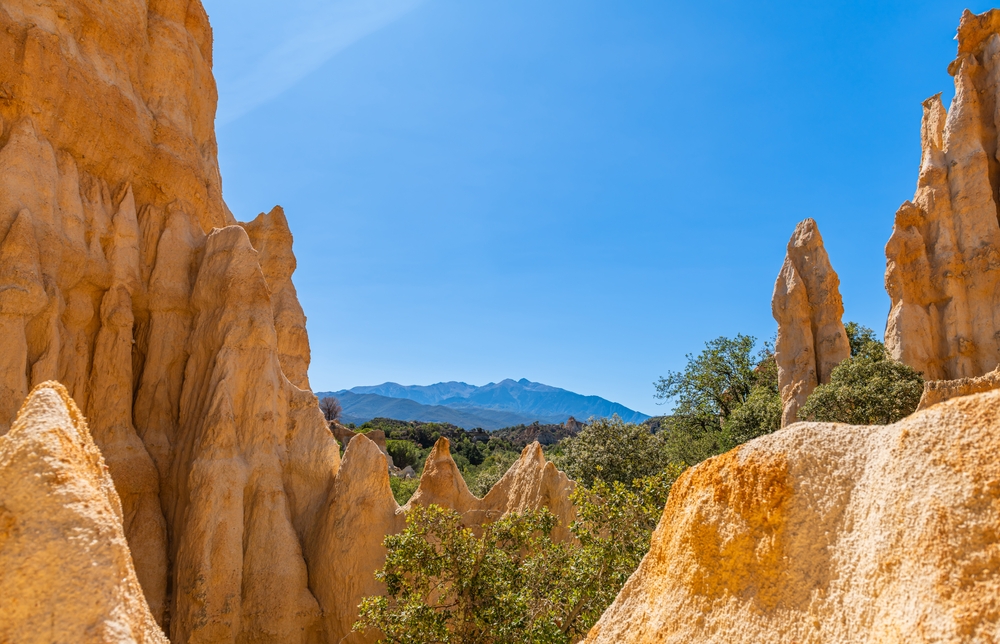
From the heights of the site, you can enjoy panoramic views over the Roussillon plain and the Canigou massif, the sacred mountain of the Catalans. Depending on the season and weather conditions, the relief is adorned with changing colours, offering an ever-changing spectacle. This unrestricted view allows you to appreciate all the natural diversity of the surrounding area, with its vineyards, peach orchards and rolling hills.
On a clear day, you can see all the way to the snow-capped peaks of the Pyrenees, creating a striking contrast with the warm hues of the rock formations in the foreground. These panoramas are an ideal opportunity for lovers of photography and wide open spaces to immortalise the beauty of the Catalan landscape.
4. The reception and exhibition area
At the entrance to the site, a reception area offers practical services and an exhibition dedicated to the natural and cultural history of the Orgues d’Ille-sur-Têt. Here you’ll find models, photographs and educational resources to help you understand the origins of the site and its role in the local heritage. This area, designed to inform and educate, is the perfect complement to the visit, offering additional insights before you set off on your walk.
The adjoining shop sells local souvenirs, books on geology and the region’s heritage, as well as craft products from the Pyrénées-Orientales. It’s the perfect opportunity to extend your discovery and take home a little piece of this exceptional place.
How do I get to the Orgues d’Ille-sur-Têt from Perpignan?
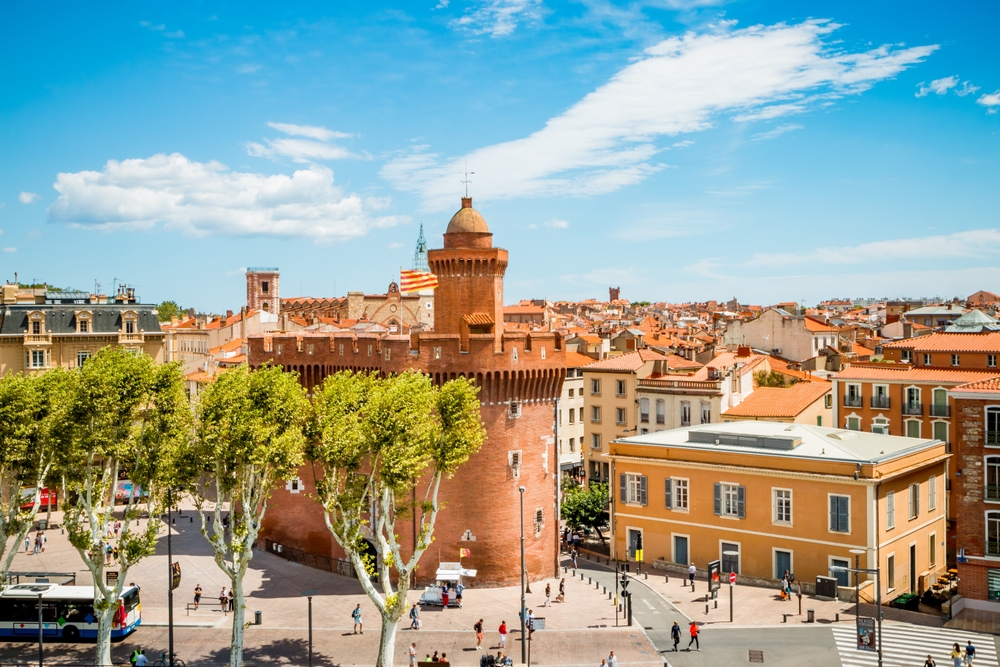
Les Orgues d’Ille-sur-Têt is located at 1 Chemin de Régleilles, 66130 Ille-sur-Têt(see on Google Maps), rated 4.5/5 on Google for over 4,700 reviews). There are several options for getting to the site from Perpignan.
By car
From the centre of Perpignan, take the N116 towards Prades. The journey takes around 30 minutes and covers a distance of 25 kilometres. Free parking is available in the immediate vicinity of the site, making access much easier. The route passes through the Roussillon countryside and offers lovely views of the surrounding area.
By train
Take the TER 06 line: Perpignan-Villefranche-Vernet-les-Bains-Latour-de-Carol-Enveitg from Perpignan station. The journey to Ille-sur-Têt station takes around 20 minutes. Please note that there is no shuttle bus from the station to the Orgues site. Allow around 20 minutes’ walk or take a taxi for the last few kilometres.
By bus
Bus route LIO 520 (direction Prades) leaves from Perpignan bus station, Boulevard Saint-Assiscle, and stops at Ille-sur-Têt – Foiral. The journey takes around 35 to 45 minutes. This €1 regional service is an economical option for passengers without their own vehicle. Timetables can be consulted on the Occitanie region website.
To plan your visit to the region, don’t hesitate to consult the Navaway itinerary for Perpignan, which will enable you to discover all the treasures of the Catalan capital before or after your excursion to Les Orgues.
Schedules and prices for the Orgues d’Ille-sur-Têt
The Orgues site is open every day of the year, except 25 December and 1 January. Opening times vary according to the season, to take advantage of the best lighting conditions.
Opening times according to season
1 April to 30 June: 9.30am to 7pm, last admission at 6pm. 1 July to 31 August: 9am to 8pm, last admission at 7pm. 1 September to 31 October: 9.30am to 6.30pm, last admission at 5.30pm. 1 November to 31 March: 10am to 5pm, last admission at 4pm.
Admission prices
Adult ticket: €5. Reduced rate : 4 on presentation of proof of entitlement (discovery pass, teenagers aged 14-18, students, disabled people, jobseekers). Children aged 10 to 13: €3.50. Free for children under 10. Special rates are available for adult and school groups by prior arrangement.
We recommend that you buy your tickets online to avoid waiting at the ticket office, particularly in high season. The self-guided tour lasts on average between 45 minutes and 1? hours, depending on your pace and your interest in the geological explanations.
History and geological formation of the Orgues d’Ille-sur-Têt

The history of the Orgues d’Ille-sur-Têt goes back several million years and bears witness to the titanic forces that have shaped the Mediterranean landscape. Understanding how they were formed is the key to fully appreciating the rarity and fragility of this exceptional site.
A geological formation dating back thousands of years
Around 5 million years ago, during the Pliocene era, sediments from the River Têt gradually accumulated on the Roussillon plain. These successive deposits of sand, clay and pebbles formed rock layers of varying hardness. The combined action of water erosion caused by torrential rains and wind erosion then sculpted these spectacular formations.
The phenomenon of differential erosion explains the characteristic appearance of fairy chimneys. Water seeps through the less dense rock layers and gradually carves out vertical gullies, leaving the more resistant parts that form the columns intact. This process continues today, imperceptibly modifying the landscape with each storm.
A protected site since the 20th century
Recognising the natural and geological importance of the Orgues, the local authorities classified the site in 1981 as part of the law of 2 May 1930 on the protection of natural monuments and sites of an artistic, historical, scientific, legendary or picturesque nature. This legal protection aims to preserve this exceptional heritage for future generations.
The site is managed by the Ille-sur-Têt town council, which is responsible for ensuring compliance with the regulations and raising visitor awareness. Strict measures have been put in place to limit human impact on these fragile formations, including a ban on touching the rock faces and the obligation to stay on the marked footpaths.
Legends and popular imagination
In the local imagination, the mysterious silhouettes of the fairy chimneys have given rise to many legends. It is said that supernatural creatures once roamed the site after dark. These tales, handed down from generation to generation by oral tradition, add a magical dimension to the discovery of the Orgues and contribute to their unique reputation.
Practical tips for your visit
To make the most of your visit to the Orgues d’Ille-sur-Têt, here are a few recommendations to optimise your experience.
1. Favour the morning or the end of the day
Early morning and late afternoon offer the best visiting conditions. The low-angled light sublimates the relief and colours of the rock formations, creating spectacular plays of light and shadow. What’s more, these times avoid the summer heat and the crowds of tourists.
2. Proper equipment
Bring comfortable, closed-toe walking shoes, as the terrain can be uneven. In summer, a hat or cap is essential for protection from the Mediterranean sun. Don’t forget to take plenty of water with you, especially during the summer months, as there are few shaded areas on the site.
3. Respect the fragility of the site
The Orgues d’Ille-sur-Têt are extremely fragile geological formations that are constantly changing as a result of erosion. It is strictly forbidden to touch the rock faces, climb the formations or stray from the signposted paths. Your responsibility as a visitor contributes to the preservation of this exceptional natural heritage.
4. Allow enough time
You should allow between 45 minutes and 1? hours for a complete visit to the site, depending on your pace and your interest in the geological aspects. If you want to take full advantage of the educational explanations and take the time to photograph the different viewpoints, plan on spending two hours.
5. Accessibility
The main path has a few irregularities that can make access difficult for people with reduced mobility or pushchairs. Ask at reception about partial access options. Families with young children may prefer to use a baby carrier rather than a pushchair.
What to do around the Orgues d’Ille-sur-Têt?
The Pyrénées-Orientales has a wealth of remarkable sites to discover in the area around Les Orgues. Here is a selection of the best excursions to round off your day or your stay in the region. Don’t forget that the Navaway itinerary for Perpignan allows you to discover the Catalan capital on your own.
1. Castelnou, one of the most beautiful villages in France
Just 15 kilometres from Les Orgues, Castelnou(see on Google Maps) is a medieval village perched at the foot of the Aspres mountains, with Canigou in the background. Its cobbled streets, shale houses and imposing 10th-century viscount’s castle make it a must-see. The village is also home to numerous craft workshops and small shops selling local produce.
2. The Serrabone Priory
Around 20 kilometres away, this jewel of Catalan Romanesque art(see on Google Maps), rated 4.6/5 on Google out of 1,500 reviews, nestles in a wild green setting. Built in the 12th century, the priory is famous for its tribune carved in pink marble, considered to be one of the masterpieces of Romanesque sculpture. The site also offers magnificent views of the surrounding mountains.
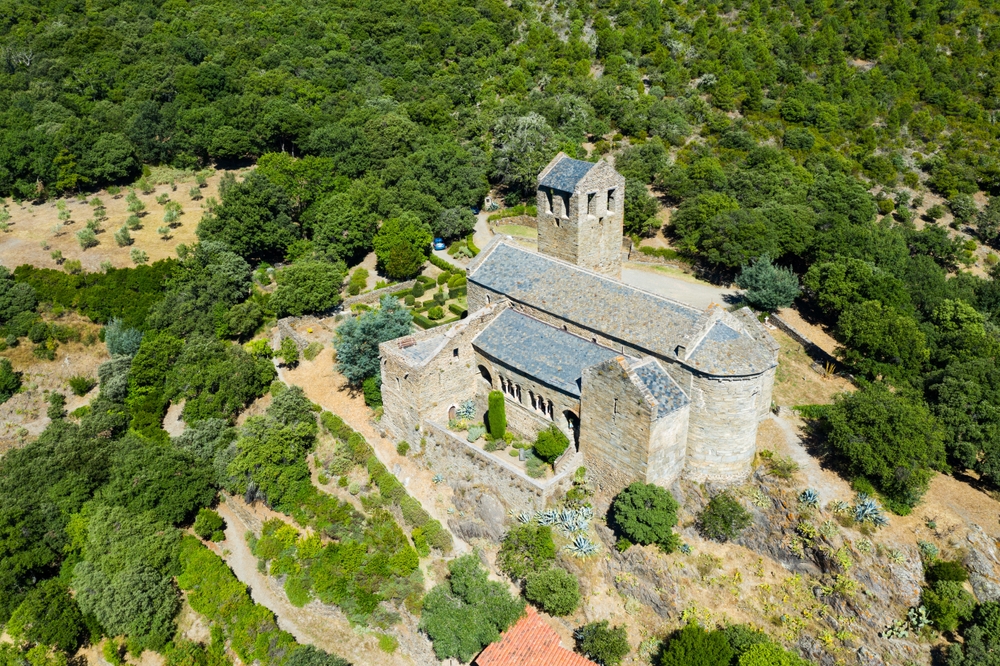
3. Eus, a listed hilltop village
Just 15 kilometres away, Eus(see on Google Maps) is another jewel in the crown of France’s Most Beautiful Villages. Perched 400 metres above sea level on a rocky outcrop, this sunny village overlooks the Têt valley. Its golden stone houses, baroque church and terraced gardens make for a particularly photogenic, picturesque picture.
4. Villefranche-de-Conflent
Just 25 kilometres away, this city, fortified by Vauban(see on Google Maps) and rated 4.6/5 on Google for 3,200 reviews, is a UNESCO World Heritage Site. Its perfectly preserved ramparts, medieval streets and Fort Libéria, accessible via a 1,000-step underground staircase, make for a memorable visit. It is also the departure point for the famous Yellow Train, which climbs the Pyrenees.
5. Collioure, the pearl of the Côte Vermeille
A 45-minute drive away, Collioure(see on Google Maps, rated 4.6/5 on Google for 8,500 reviews) is a seaside village that inspired Matisse and Derain. Its colourful fishing port, its royal castle, its church with its emblematic bell tower and its turquoise coves make it a choice destination for combining heritage and Mediterranean idleness.
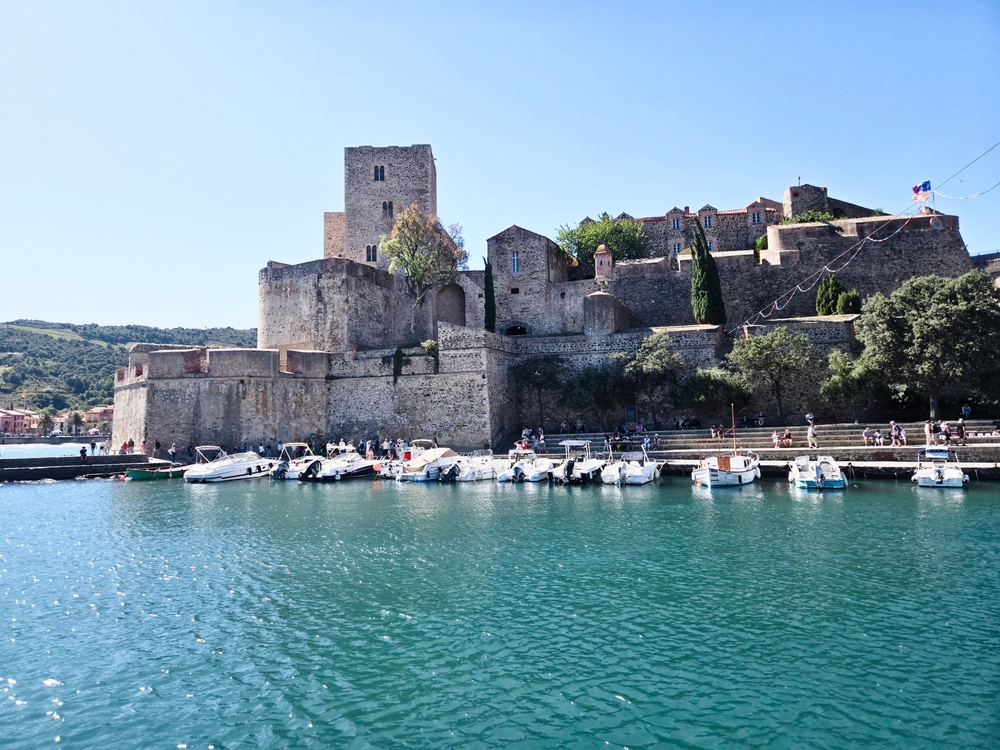
To help you plan your visit to the region, take a look at the Perpignan itinerary, which provides an excellent basis for exploring the Pyrénées-Orientales.
Where to eat near the Orgues d’Ille-sur-Têt?
The village of Ille-sur-Têt and the surrounding area offer a range of dining options to make your visit even more enjoyable. You’ll find traditional Catalan restaurants, pizzerias and cafés in the centre of Ille-sur-Têt, just a few minutes’ drive from the Orgues site.
If you prefer a picnic, there are picnic areas close to the site, so you can enjoy the natural surroundings while savouring your provisions. Don’t forget to keep the site clean and take your rubbish with you. After your visit, you can also drive 30 minutes to Perpignan to discover the rich Catalan gastronomy on offer.
In conclusion, the Orgues d’Ille-sur-Têt is a must-see when visiting the Pyrénées-Orientales. This unique geological site offers a remarkable visual and educational experience, accessible to all ages. With its spectacular rock formations, panoramic views over Roussillon and the Canigou massif, and the richness of the surrounding villages, you’ll have all the ingredients for an unforgettable day of discovery. Make the most of your time in the region to explore Perpignan too, thanks to the Navaway itinerary, which will reveal all the treasures of the French Catalan capital. This combination of natural and cultural heritage will allow you to appreciate all the richness of this endearing Catalan region.
Frequently asked questions
How long does it take to visit the Orgues d’Ille-sur-Têt?
A visit to the Orgues site generally takes between 45 minutes and 1? hours, depending on your pace and your interest in the geological aspects. If you want to take full advantage of the explanatory panels and take the time to photograph the various viewpoints, you should plan to spend two hours there.
Can children visit the Orgues d’Ille-sur-Têt?
Yes, the site is accessible to families with children. The trail is generally passable, although some sections can be uneven. Children under 10 are free. For toddlers, it is preferable to use a baby carrier rather than a pushchair because the terrain can be uneven. The educational panels may also be of interest to children who are curious about nature.
Are pets allowed?
Pets on a lead are generally allowed on the trail. However, it is advisable to check with reception when you arrive. Owners must pick up after their pets to keep the natural site clean.
When is the best time to visit the Orgues?
The site can be visited all year round, with each season offering a different face. Spring (April-May) and autumn (September-October) are particularly pleasant, with mild temperatures and ideal light for photography. Summer offers long days, but temperatures can be high. In this case, it’s best to visit in the morning. Winter offers fewer visitors and magnificent low-angled light, although the days are shorter.
Can I take photos on the site?
Photographs and videos are authorised for personal use only. The site offers many exceptional photographic opportunities, particularly at sunrise and sunset. Prior authorisation is required for any commercial or professional use. Photographers will particularly appreciate the play of light on the rock formations at different times of the day.
Are there any guided tours available?
Guided tours are available by prior arrangement, in French, English and Spanish. They generally last between 1h15 and 1h30 and provide an opportunity to learn more about the geological formation of the site, its history and its protection. Prices and timetables for guided tours are available on the official website or directly from reception. Special services can be organised for school groups and adults.
Is the site accessible to people with reduced mobility?
The main path has irregularities that can make the visit difficult for wheelchair users or those with reduced mobility. However, some sections of the trail are accessible. It is advisable to contact reception before your visit to find out about partial access options and organise your visit to the site in the best possible way.
Can the visit be combined with other sites during the day?
Absolutely! A visit to Les Orgues lends itself perfectly to a day of discovery combined with other sites in the Pyrénées-Orientales. You can easily combine Les Orgues with a visit to Castelnou, the Prieuré de Serrabone or the village of Eus, all less than 30 minutes away by car. For a complete discovery of the region, don’t forget to also visit Perpignan with the Navaway audio tour.
200 audioguided tours for cities all around the world
Download